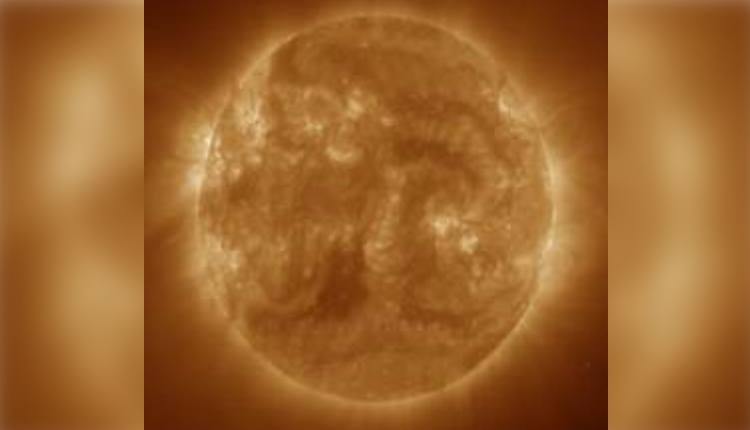New Delhi: Astronomers from the Indian Institute of Astrophysics (IIA), an autonomous institute of the Department of Science and Technology, have accurately estimated the physical parameters of thermal and magnetic field structures of solar coronal holes.
These structures have a significant influence on space weather that affects satellites, as well as the Indian summer monsoon rainfall.
“Coronal holes, which are dark regions in X-ray and extreme ultraviolet images of the Sun, have open magnetic field lines and are hence important for understanding the interplanetary medium and space weather. The latitude dependence of temperature and the magnetic field strengths of these coronal holes have now been characterised accurately,” said the team from the (IIA).
A recent physics-based study found that besides the influence of sunspots, parameterised study of the radiative effects of coronal holes can satisfactorily explain the variability of Indian Monsoon rainfall.
To probe further, astronomers from the IIA used eight years of full-disk calibrated images observed by the Solar and Heliospheric Observatory (SOHO) space probe.
The study, published in the journal Astronomy and Astrophysics, accurately estimated the physical parameters of thermal and magnetic field structures of coronal holes.
“The study also offers a comprehensive understanding of how these near-equatorial coronal holes evolve as they traverse the solar disk,” said Dr Manjunath Hegde of IIA, and lead author of the study.
In addition, the team “found that there is no latitudinal variation of the temperature structure of coronal holes and also that there is a latitudinal variation of the strength of magnetic field structure of coronal holes that increases from the solar equator to the pole”.
“The first result suggests that coronal holes are likely to originate from the deep interior, whereas the second result suggests that coronal holes might have formed from the superposition of Alfven wave perturbations”, said Dr. K.M. Hiremath from the same institute.
“Coronal holes” in the sun’s atmosphere were discovered in the 1970s by X-ray satellites. These appear dark in the X-ray and EUV wavelengths and are low-density regions that have open magnetic field structures in the interplanetary space.
These solar activity phenomena are intense sources of fast (450-800 km/sec) solar wind — streams of charged particles that escape from the sun, more easily into space. This high-speed solar wind can interact with the Earth’s magnetic field, causing disturbances like geomagnetic storms.
Effects of sunspots on the Earth’s atmosphere and climate are well recorded, said the team. Considering these imminent dangers of space weather effects and the long-term influence of the solar coronal holes on the Indian Monsoon rainfall it is important to study their thermal, and magnetic field structures and their origin, they noted.
(IANS)















